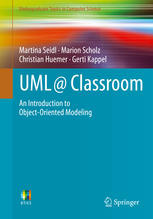

Most ebook files are in PDF format, so you can easily read them using various software such as Foxit Reader or directly on the Google Chrome browser.
Some ebook files are released by publishers in other formats such as .awz, .mobi, .epub, .fb2, etc. You may need to install specific software to read these formats on mobile/PC, such as Calibre.
Please read the tutorial at this link: https://ebookbell.com/faq
We offer FREE conversion to the popular formats you request; however, this may take some time. Therefore, right after payment, please email us, and we will try to provide the service as quickly as possible.
For some exceptional file formats or broken links (if any), please refrain from opening any disputes. Instead, email us first, and we will try to assist within a maximum of 6 hours.
EbookBell Team

5.0
40 reviewsThis textbook mainly addresses beginners and readers with a basic knowledge of object-oriented programming languages like Java or C#, but with little or no modeling or software engineering experience – thus reflecting the majority of students in introductory courses at universities. Using UML, it introduces basic modeling concepts in a highly precise manner, while refraining from the interpretation of rare special cases.
After a brief explanation of why modeling is an indispensable part of software development, the authors introduce the individual diagram types of UML (the class and object diagram, the sequence diagram, the state machine diagram, the activity diagram, and the use case diagram), as well as their interrelationships, in a step-by-step manner. The topics covered include not only the syntax and the semantics of the individual language elements, but also pragmatic aspects, i.e., how to use them wisely at various stages in the software development process. To this end, the work is complemented with examples that were carefully selected for their educational and illustrative value.
Overall, the book provides a solid foundation and deeper understanding of the most important object-oriented modeling concepts and their application in software development. An additional website (www.uml.ac.at) offers a complete set of slides to aid in teaching the contents of the book, exercises and further e-learning material.